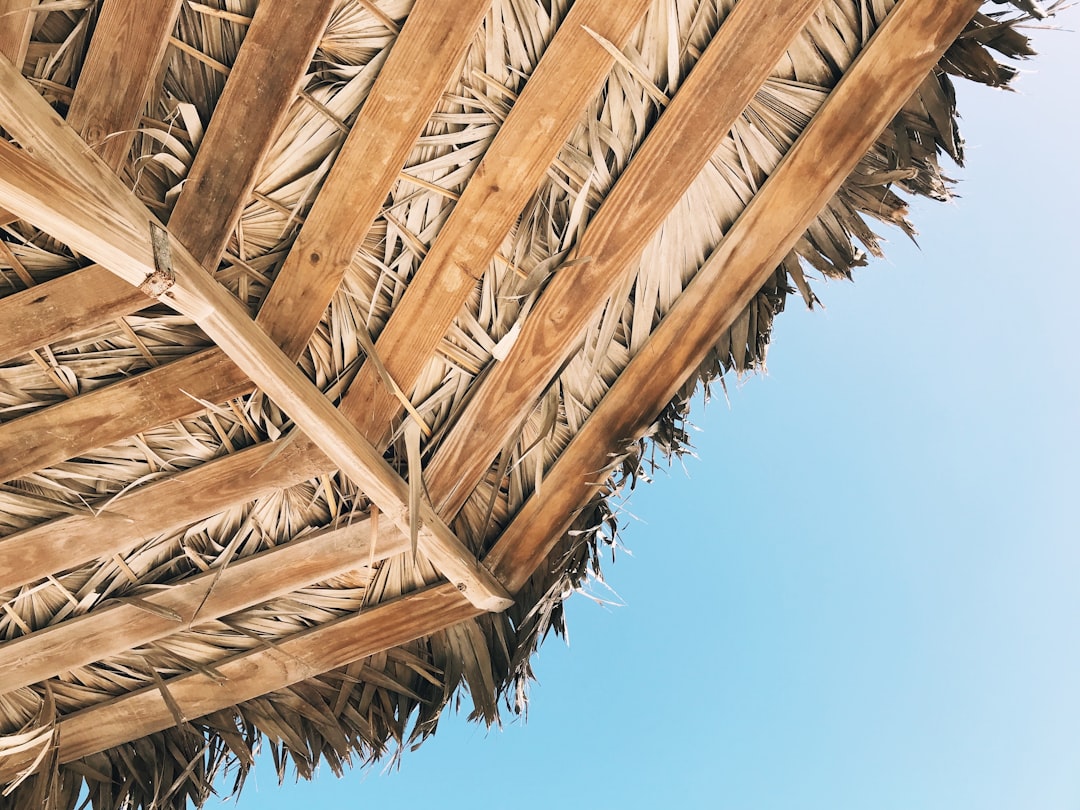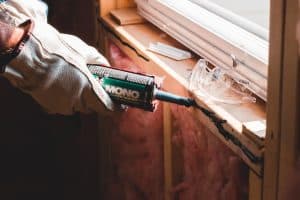Patio covers play a crucial role in creating functional and comfortable outdoor living spaces. They provide protection from the elements, allowing homeowners to enjoy their patios regardless of the weather. Whether it’s shielding from the scorching sun or providing shelter during a rainstorm, patio covers offer a sanctuary for relaxation and entertainment.
In addition to their practical benefits, patio covers also add value to a home. They enhance the aesthetic appeal of outdoor spaces, making them more inviting and appealing to potential buyers. A well-designed and well-built patio cover can significantly increase the overall value of a property.
The history of patio cover designs dates back centuries. From basic awnings to elaborate pergolas, patio covers have evolved over time to meet the changing needs and preferences of homeowners.
Key Takeaways
- Patio covers are important for creating comfortable and functional outdoor living spaces.
- Early designs ranged from basic awnings to more elaborate pergolas.
- Aluminum patio covers became popular in the 1950s and 60s.
- The 1990s saw the emergence of retractable patio covers.
- Modern trends include minimalistic and contemporary designs, as well as smart features and customization options.
Early Patio Cover Designs: From Basic Awnings to Pergolas
The earliest forms of patio covers were simple awnings and canopies made from fabric or thatch. These basic structures provided shade and protection from the sun but offered little in terms of durability or style.
In the 19th century, pergolas became popular as a more elaborate and decorative option for patio covers. Pergolas are open-air structures with columns or posts supporting a lattice roof. They provide partial shade while still allowing sunlight to filter through, creating a pleasant and airy atmosphere.
The Rise of Aluminum Patio Covers in the 1950s and 60s
In the 1950s and 60s, aluminum emerged as a popular material for patio covers. Aluminum is lightweight, durable, and requires minimal maintenance, making it an ideal choice for outdoor structures.
During this time, insulated patio covers also gained popularity. These covers feature a layer of insulation sandwiched between two layers of aluminum, providing additional protection from heat and cold. Insulated patio covers are particularly beneficial in regions with extreme weather conditions.
The 1970s and 80s: Experimentation with New Materials and Styles
The 1970s and 80s saw a period of experimentation with new materials and styles for patio covers. Vinyl and fiberglass became popular alternatives to traditional materials like wood and aluminum.
Vinyl patio covers offered the advantage of being low-maintenance and resistant to rot, insects, and fading. Fiberglass patio covers, on the other hand, provided a lightweight and durable option that could mimic the appearance of other materials like wood or stone.
Lattice patio covers also gained popularity during this time. Lattice covers feature a crisscross pattern of slats that provide partial shade while still allowing some sunlight to filter through. They add a touch of elegance and sophistication to outdoor spaces.
The 1990s: The Emergence of Retractable Patio Covers
In the 1990s, retractable patio covers became increasingly popular. These covers can be extended or retracted as needed, allowing homeowners to control the amount of shade or sunlight they desire.
Retractable patio covers offer flexibility and versatility, making them an excellent choice for those who want to enjoy their outdoor spaces in different weather conditions. They also provide protection for outdoor furniture and other belongings when not in use.
Motorized retractable patio covers took convenience to the next level by allowing homeowners to extend or retract their covers with the push of a button. This added feature made it even easier for homeowners to adjust their patio covers to their desired level of shade or sunlight.
The 2000s: Eco-Friendly Patio Covers and Sustainable Materials
In recent years, there has been a growing trend towards eco-friendly patio covers and sustainable materials. Homeowners are increasingly conscious of their environmental impact and are seeking options that are both aesthetically pleasing and environmentally responsible.
Solar-powered patio covers have emerged as a popular choice for those looking to harness the power of the sun to generate electricity. These covers feature solar panels integrated into the design, allowing homeowners to generate clean and renewable energy while enjoying their outdoor spaces.
Sustainable materials like bamboo and reclaimed wood are also being used in patio cover designs. These materials offer a natural and rustic look while minimizing the use of new resources.
Modern Patio Cover Trends: Minimalistic and Contemporary Designs
In recent years, there has been a shift towards minimalistic and contemporary patio cover designs. Clean lines, sleek finishes, and neutral colors are popular choices for homeowners looking to create a modern and sophisticated outdoor space.
Flat roof patio covers have become increasingly popular in contemporary designs. These covers feature a flat or slightly sloped roof, creating a sleek and streamlined look. They are often made from materials like aluminum or steel, offering durability and low maintenance.
The Role of Technology in Patio Cover Design: Smart Features and Automated Systems
Technology has played a significant role in the evolution of patio cover design. Smart features and automated systems have made it easier than ever for homeowners to control their patio covers and create the perfect outdoor environment.
Smart features like integrated lighting, heating, and cooling systems allow homeowners to customize their outdoor spaces to their desired level of comfort. Automated systems can be programmed to adjust the position of the patio cover based on weather conditions or time of day, ensuring optimal shade or sunlight.
Voice-activated patio covers have also emerged as a convenient option for homeowners. With voice commands, homeowners can extend or retract their patio covers without having to lift a finger.
Customization and Personalization: Catering to Unique Homeowner Needs
Customization and personalization are essential factors to consider when choosing a patio cover. Every homeowner has unique needs, preferences, and style preferences, and their patio cover should reflect that.
Custom-built patio covers allow homeowners to design a cover that perfectly fits their outdoor space and meets their specific requirements. From size and shape to materials and finishes, every aspect of the patio cover can be tailored to the homeowner’s liking.
Personalization options like decorative elements, colors, and patterns allow homeowners to add their personal touch to their patio covers. This ensures that the patio cover not only provides functionality but also enhances the overall aesthetic appeal of the outdoor space.
Savannah Pergola Company: Leading the Way in Innovative and Stylish Patio Cover Designs
When it comes to innovative and stylish patio cover designs, Savannah Pergola Company is leading the way. They offer a wide range of custom-built pergolas and patio covers that are designed to meet the unique needs and style preferences of homeowners.
Savannah Pergola Company uses high-quality materials and craftsmanship to create durable and visually appealing patio covers. Their team of experts works closely with homeowners to design and build a cover that perfectly complements their outdoor space.
Whether it’s a traditional pergola, a modern flat roof cover, or a motorized retractable cover, Savannah Pergola Company has the expertise and experience to bring any patio cover vision to life.
The history and evolution of patio cover designs have come a long way, from basic awnings to innovative and stylish structures. Patio covers not only provide protection from the elements but also enhance the aesthetic appeal and value of a home.
With advancements in technology and a growing focus on sustainability, patio covers have become more versatile, customizable, and eco-friendly than ever before. Homeowners now have a wide range of options to choose from, allowing them to create outdoor spaces that reflect their unique needs and style preferences.
When selecting a patio cover, it is essential to consider factors such as materials, style, functionality, and personalization options. Working with a reputable company like Savannah Pergola Company ensures that homeowners receive a high-quality patio cover that meets their specific requirements and enhances their outdoor living experience.
If you’re interested in learning more about the materials used in patio cover designs, check out this informative article on Savannah Pergola’s website. They provide a comprehensive guide to different materials available for patio covers, including wood, aluminum, and vinyl. Understanding the pros and cons of each material can help you make an informed decision when it comes to designing your own patio cover. To read more about it, click here.




